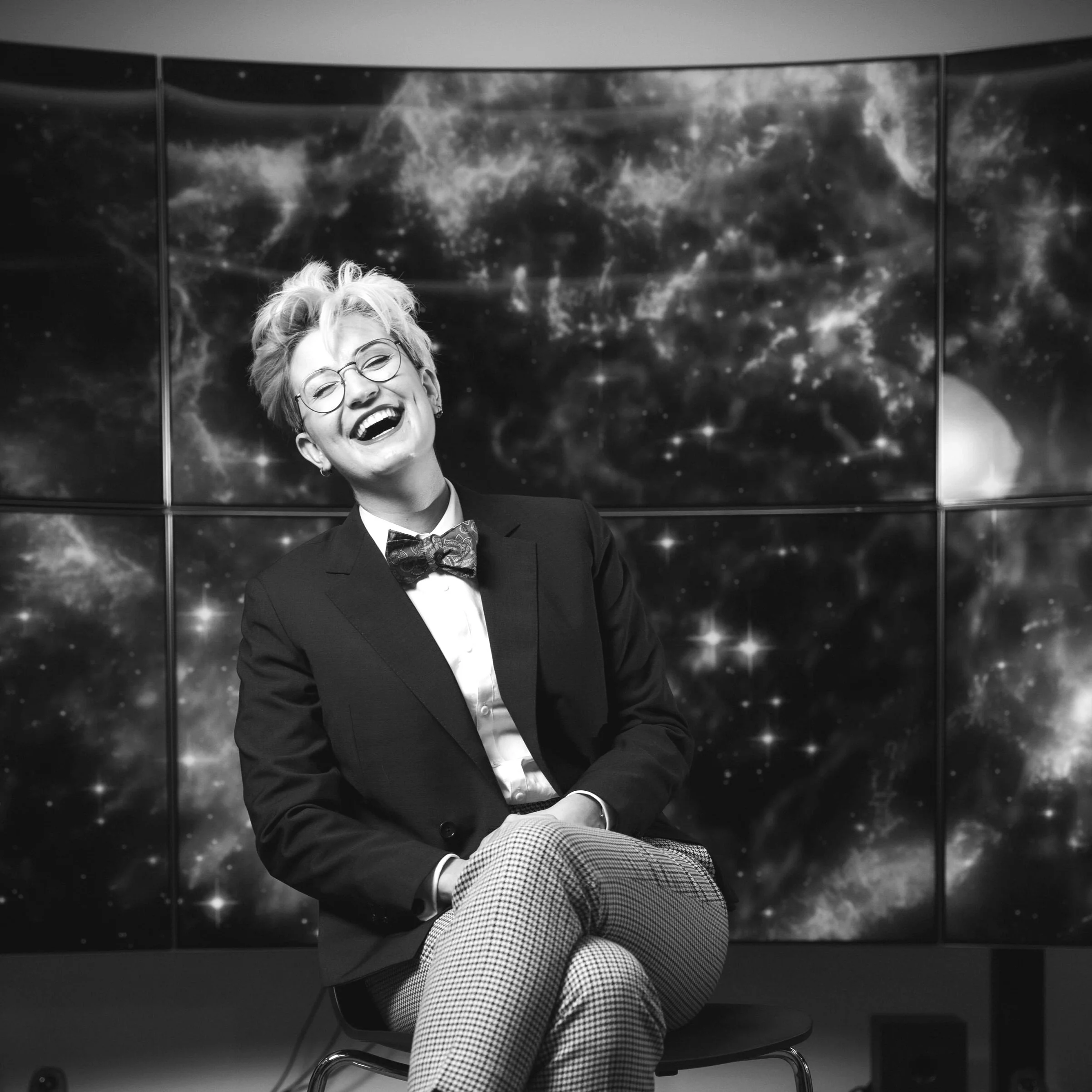
Dr. Heloise F. Stevance
University of Auckland, New Zealand
Queen’s University Belfast, Northern Ireland
BPASS | ENGRAVE | ATLAS
RESEARCH
Read more by topic
Talks
Schmidt A.I. Fellow - University of Oxford
-
Just because you can doesn’t mean you should - Machine Learning for Transients - December 2023
The home and Genealogy of the first binary neutron star merger - ImBaSE2022 - November 2022
Astrophysical Polarimetry in the Time-Domain Era Spectropolarimetry of CCSNe — September 2022
Kiwi Pycon 2022 — August 2022 — Key Note: Title TBD
PyCode 2021 — December 2021 — Open Source: A Scientist’s Perspective
RASNZ conference — July 2021 —The Most Luminous Supernovae: It takes two to tango
EAS 2021 — June 2021 — The Art Of Public Speaking
Media SAVVY course— April 2021 — Navigating Social Media As A Scientist
-
NZIP conference — July 2021 — The Most Luminous Supernovae: It takes two to tango
EAS Annual conference — June 2021 — The Art of Public Speaking
IAU 361 pre-conference — May 2021 — “HII regions: Old or older?”
IAU 360 — AstroPol 2021 — 25 Years of Type IIb Supernova Spectropolarimetry: New Insights On SN 1993J
IAU CB1 Virtual Meeting 2020 — Challenges and Innovations in Computational Astrophysics - II — SED Fitting with Deep Learning - Magic or Tragic?
RANZS — 2020 online conference — How old is Matariki (the Pleiades)?
National Astronomical Meeting (NAM) 2017 — Spectropolarimetry of the broad-lined Ic SN2014ad (final results)
National Astronomical Meeting (NAM) 2016 — Spectropolarimetry of the broad-lined Ic SN2014ad (preliminary results)
-
5 year update: Transient Genealogy and My Virtual Research Assistant - University of Sheffield - February 2024
Just because you can does not mean you should - Armagh Observatory - January 2024
Retracing the footsteps of dying massive stars - University of Hertfordshire - October 2023
Retracing the footsteps of dying massive stars - IAU Massive Stars division Seminar - September 2023
End-to-end transient characterisation with BPASS 一 Radbound University 一 January 2023
OzGrav — March 2022— The Genealogy of GW170817
Mt Stromolo — November 2021 — The Art of Communicating Science
Monash University — October 2021 — The life story of AT 2017gfo
University of Delaware — April 2021 — “Good Enough” Practice: Best coding practice for Astronomers
Florida Institute of Technology — April 2021 — Exploding stars and their neighbours
Armagh Observatory — July 2020 — Hoki: Bridging the gap between observation and theory
Warick University — May 2019 — The 3D shape of Core Collapse Supernovae
Students
-
Aanjaneya Sharma (2023/2024) - Undergraduate Student - Using Machine Learning to identify M-dwarf Flares in the ATLAS sky survey - niversity of Oxford
-
Sean Richards — 2021/2022 — PhD student — University of Auckland
Gleb Geinke — 2021 — Master’s student — University of Auckland
Adib Mowaz — 2020/2021 — Honours Student — University of Auckland
Amanda (Yeonjin) Lee — Summer 2020/2021 — Undergraduate Summer Scholarship - University of Auckland
Celina Turner — Summer 20/21 — Undergraduate Summer Volunteer - University of Auckland
Gleb Geinke — 2019/2020 — Honours Student — University of Auckland
Kahmin Goh — Summer 2017 — Undergraduate Summer Scholarship — University of Sheffield.
Bio
Originally born and raised in France, I moved to the UK to study Physics and Astronomy at the University of Sheffield. After working as a support astronomer at the Isaac Newton Group in La Palma for a year, I obtained my Masters of Physics in 2015. I subsequently started a PhD studying the 3D shape of Core Collapse Supernovae, and earned my title in Spring 2019. In July of that year, I joined the University of Auckland as a Research Fellow to research the evolution of massive stars to better understand how they die and produce Supernovae and Kilonovae. In 2021 I was honoured to receive the title of Beatrice Tinsley Lecturer by the Royal Astronomical Society of New Zealand, which led to a national tour of Public Lectures to introduce the public to Black-Hole and Neutron Star mergers. Finally in 2023 I received a Schmidt A.I. in Science Fellowship from the University of Oxford where I am currently developing A.I. models for international sky surveys that can detect thousands of supernovae and other stellar explosions every year.

SCI-COMM
Live Events and News
I started doing science communication in 2016 and have participated in over 75 events (live talks, podcasts, TV, radio) aimed at all types of audiences. I have also consulted with journalists on news articles and published several opinion and news pieces myself.
Beatrice Tinsley Lecturer 2021
I was honoured to be named Beatrice Tinsley Lecturer by the Royal Astronomical Society of New Zealand in 2021. The public lecture tour took place in February 2022 and the 12 events across all of Aotearoa allowed me to meet over 800 people willing to brave omicron to learn about Black Holes and Neutron Stars.
Other Resources
Be Concise, Yet Precise
I have written a guide to scientific writing aimed at masters and PhD students. Although it started as a resource for my own students, many have found it useful and it has been cited in peer-reviewed literature. It is free to download and if you have edit suggestions I would love to read your feedback.
Graphics
I used to create infographics and other visual aids for outreach. They are all under a creative commons license and you can use them for free without asking!
Blog
For miscellaneous tips and opinions on academia such as changing PhD advisor, misogyny and more check my blogs!


